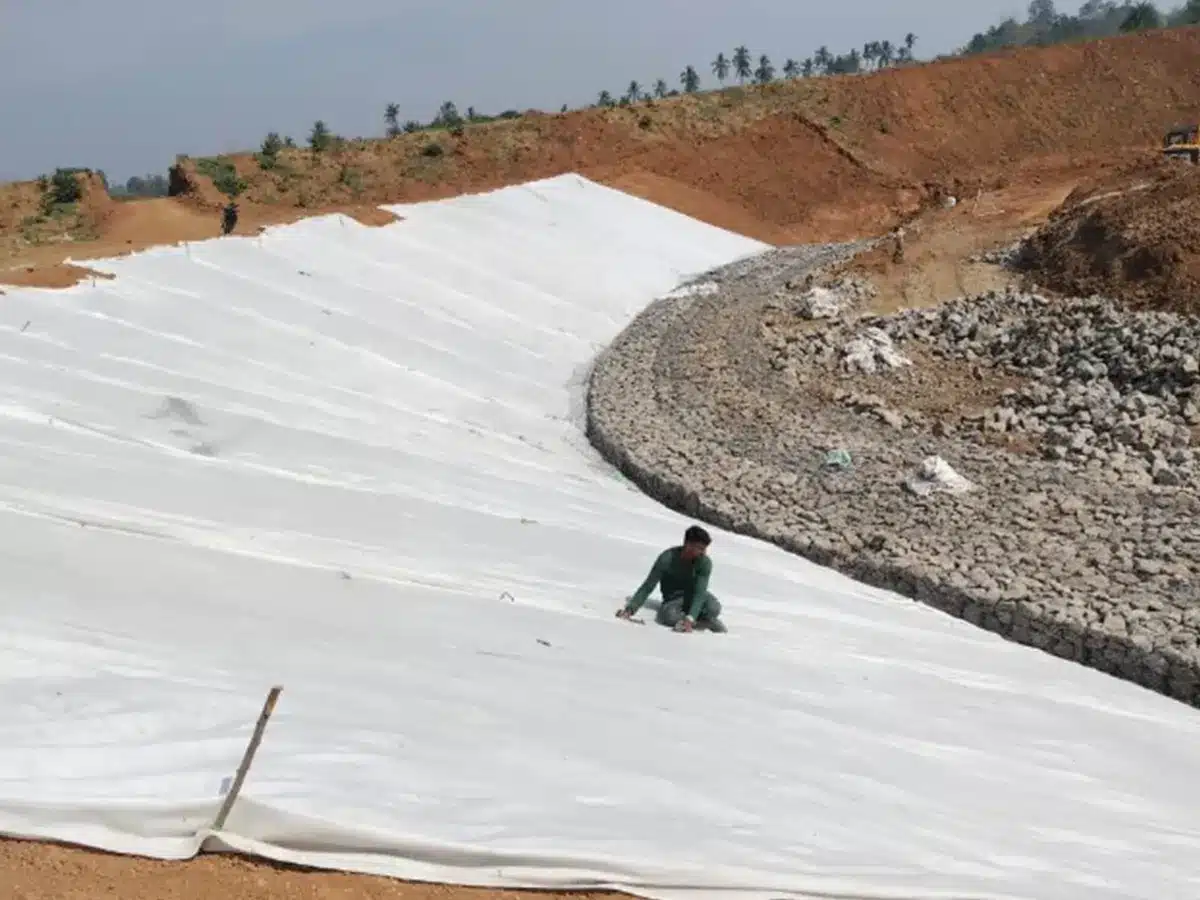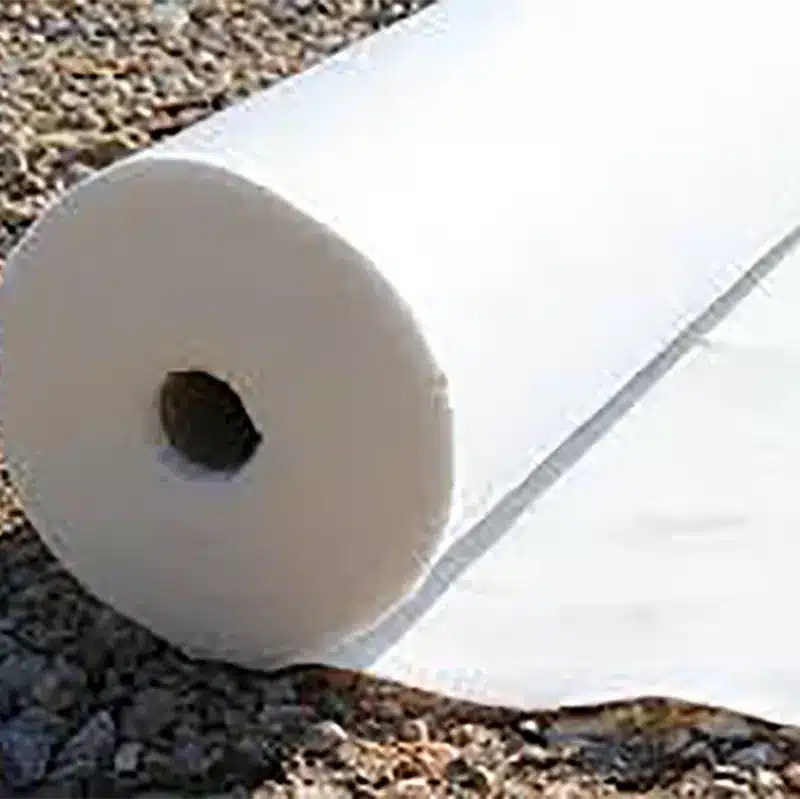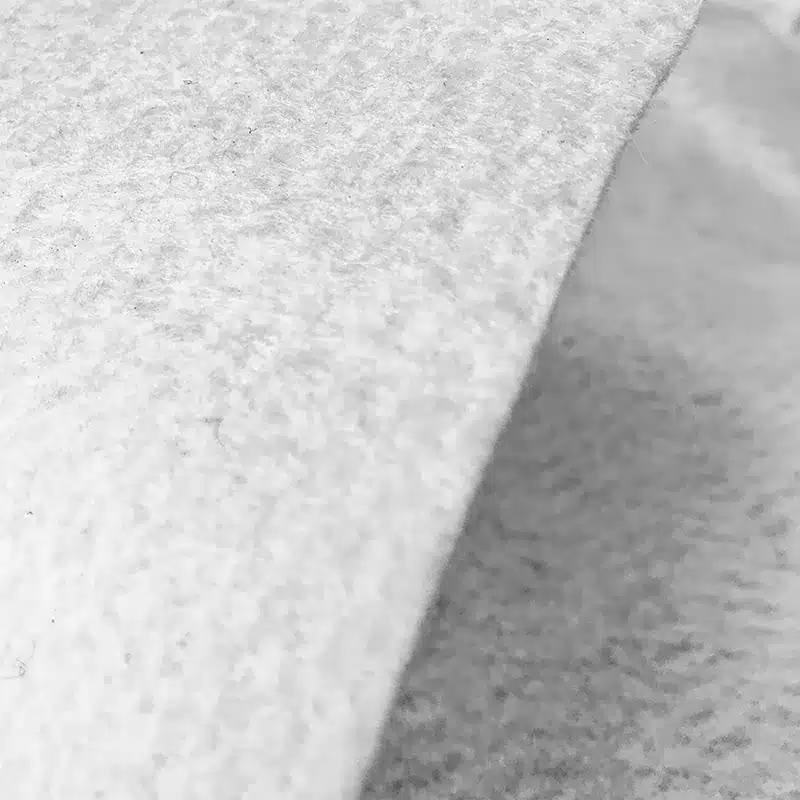+86-159 9860 6917
info@geofantex.com
geofantex@gmail.com
+86-400-8266163-44899
Geotextile landscaping fabric has long played a crucial role in hardscape projects by providing separation, reinforcement, and filtration for optimal drainage. Not all fabrics are suitable for every project, so understanding their differences is essential for success.
Woven & Non-Woven Geotextile Fabric
Geotextile fabrics are commonly used in civil engineering, landscaping, and environmental projects. Woven and non-woven geotextiles each serve unique roles, based on their properties and structure. Here’s a structured guide on their definitions, properties, applications, and comparisons.
Definition
- Woven Geotextile Fabric: Created by weaving individual polypropylene or polyester fibers, woven geotextiles are structurally similar to fabric and possess a uniform appearance.
- Non-Woven Geotextile Fabric: Made through bonding or needle-punching processes, non-woven fabrics are composed of randomly oriented fibers, offering a felt-like texture.
Properties
- Permeability: Woven Fabric: Generally has lower permeability, meaning it allows less water flow, making it ideal for applications where water flow restriction is important. Non-Woven Fabric: Higher permeability allows for better water drainage and filtration, suited for projects requiring fluid passage.
- Tensile Strength: Woven Fabric: High tensile strength, excellent for load-bearing and reinforcement purposes. Non-Woven Fabric: Lower tensile strength, but highly flexible and able to conform to irregular surfaces.
- Durability: Woven Fabric: Typically more durable, resistant to UV exposure, and long-lasting in outdoor applications. Non-Woven Fabric: Moderate durability, suitable for applications with less stress on the fabric.
Applications
- Woven Geotextile Fabric: Road construction, to enhance soil stability and increase load-bearing capacity. Erosion control in steep slopes or high-flow water areas. Reinforcement under foundations and retaining walls.
- Non-Woven Geotextile Fabric: Drainage systems where water needs to pass through but the soil should be contained. Landscaping applications like garden beds to improve soil health and control weed growth. Filtration and sediment control in environmental projects, such as silt fencing.
Comparison and Key Differences
| Feature | Woven Geotextile | Non-Woven Geotextile |
|---|---|---|
| Structure | Woven with fiber strands | Random fiber orientation |
| Permeability | Lower, less suitable for drainage | High, ideal for drainage applications |
| Tensile Strength | High | Moderate |
| Durability | Higher, UV-resistant | Moderate, flexible |
| Typical Uses | Roadways, erosion control | Drainage, landscaping, filtration |
Summary of Key Points
- Woven fabrics are durable, have high tensile strength, and are ideal for reinforcement and structural applications.
- Non-woven fabrics offer better permeability, are flexible, and are suited for drainage, filtration, and landscaping projects.
- Choosing between the two types depends on project requirements, including water flow, structural support, and environmental exposure.

Woven Geotextile Landscape Fabric
Overview of Woven Geotextile Landscape Fabric: Woven geotextile landscape fabric is a durable, permeable material widely used in landscaping, civil engineering, and construction. Made from woven polypropylene or polyester fibers, this fabric provides essential benefits for soil stabilization, erosion control, and drainage management. It is especially popular in projects requiring soil support and reinforcement due to its robust tensile strength and longevity.
Purpose and Benefits
| Soil Stabilization | Woven geotextiles improve soil stability by separating different soil layers, preventing the intermixing of gravel and soil. This enhances the structural integrity of construction sites, roads, and driveways. |
| Erosion Control | The fabric mitigates erosion by anchoring soil in place, particularly effective on slopes, embankments, and near water bodies. |
| Drainage Management | It allows for controlled water flow, aiding in filtration and reducing waterlogging, crucial for areas with variable water levels. |
Material Composition and Type
| Material | Typically composed of polypropylene or polyester, these materials are woven in a way that optimizes strength and water permeability. |
Types of Woven Geotextiles:
| Standard Woven Geotextile | Offers balance between strength and drainage capabilities, suitable for general landscaping. |
| High-Strength Woven Geotextile | Often used for heavy load-bearing applications like road construction and high-traffic areas. |
Applications in Landscaping and Engineering
| Road Construction | Prevents road base and subgrade intermixing, extending road life and reducing maintenance needs. |
| Retaining Walls | Reinforces soil and prevents shifting, enhancing the stability of retaining structures. |
| Gardens and Pathways | Reduces weed growth while allowing water and nutrients to pass through, ideal for garden beds and pathways. |
Environmental Considerations
| Sustainability | Some woven geotextiles are made from recycled materials, contributing to reduced environmental impact. |
| Biodegradability | While most woven fabrics are synthetic, options are available with natural, biodegradable fibers, although these may have reduced durability. |
Installation Guidelines
| Preparation | Clear and level the installation area, removing debris and roots. |
| Placement | Lay the fabric flat, anchoring it securely along edges to prevent shifting. |
| Overlap | Overlap seams by at least 6 inches to maintain continuous coverage. |
| Covering | Add a layer of soil or gravel over the fabric to protect it from sunlight and wear. |
Maintenance Practices
| Inspection | Check periodically for exposed or damaged areas, especially after severe weather. |
| Replacement | In high-traffic or erosion-prone areas, replacement may be required after several years to maintain effectiveness. |
Non-Woven Geotextile Landscape Fabric
Non-woven geotextile landscape fabric is a synthetic material commonly used in landscaping and construction to improve soil stability, prevent erosion, and enhance drainage. Made from polypropylene or polyester fibers, it is bonded together mechanically, thermally, or chemically to create a fabric that is both flexible and durable.
Key Benefits:
- Soil Stabilization: Provides a strong base that reinforces soil, reducing settling and shifting over time.
- Weed Suppression: Blocks sunlight to limit weed growth without needing chemicals.
- Enhanced Drainage: Allows water to pass through while preventing soil particles from clogging, promoting better soil drainage.
- Long-lasting Durability: Resistant to deterioration from exposure to soil microorganisms, it is highly durable in various environmental conditions.
Applications:
- Landscaping and Gardening: Prevents weed growth and stabilizes soil in flower beds and garden paths.
- Construction: Used in roadways, embankments, and drainage fields to strengthen underlying soil and prevent erosion.
- Water Management: Common in drainage systems, helping to channel water away from critical areas while filtering sediments.
Installation Process:
- Prepare the Area: Remove any existing vegetation, rocks, or debris.
- Lay the Fabric: Position the fabric over the prepared surface, overlapping edges by at least 6 inches to ensure stability.
- Anchor and Secure: Use landscape pins or staples to secure the fabric in place, especially along edges and corners.
- Cover with Soil or Mulch: Spread a layer of soil, gravel, or mulch over the fabric to protect it from direct sunlight and increase its longevity.
Non-Woven vs. Woven Geotextile:
- Non-Woven: Better suited for filtration and drainage applications due to its permeable nature, allowing water and air to pass through.
- Woven: Known for its tensile strength, making it ideal for applications requiring reinforcement and heavy load support, such as roads and embankments.
Non-woven geotextile fabric is a versatile and essential component in sustainable landscaping and construction projects, offering both functional and environmental benefits.
Choosing the right geotextile fabric depends on project-specific needs, whether reinforcing driveways or enhancing drainage in retaining walls. Understanding these fabric types’ attributes ensures optimal performance and durability in landscaping endeavors.



Get Free Sample
We’ll respond as soon as possible(within 12 hours)





















